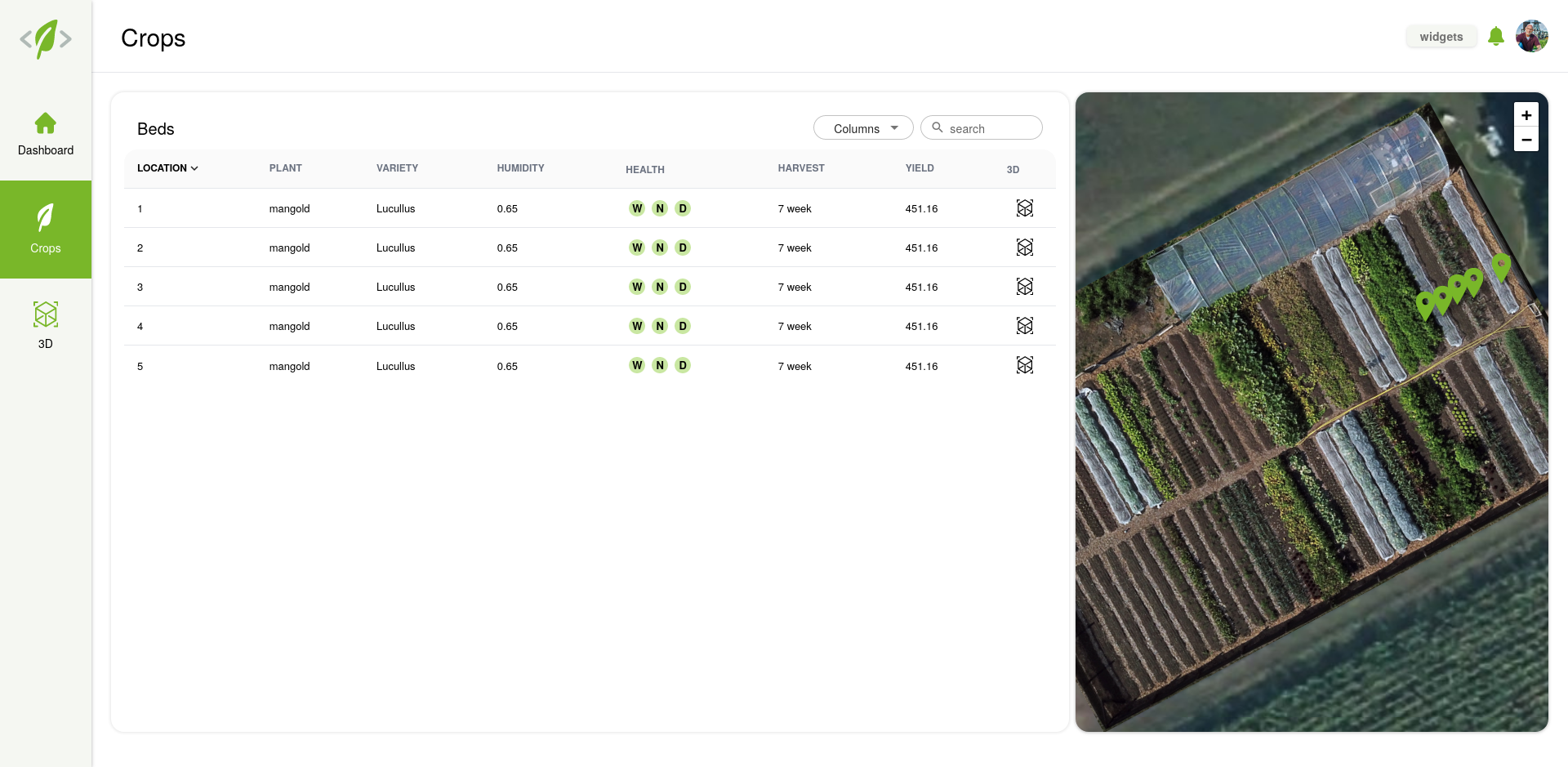Environmental friendly micro framing requires a lot of knowledge for the cultivation of a garden. As a consequence, a lot of newcomers and people switching from convention agriculture have trouble managing their garden. To resolve this problem, the PlantMap Digital Logbook was created, a digital representation of a garden, which monitors the plants and helps with instructions if problems like water deficiency or diseases are detected.
This project was developed in the software engineering course of the University of Applied Sciences Osnabrück in cooperation with Nature Robots and the DFKI PBR Osnabrück. The goal was to create a platform to support sustainable micro farming gardeners. Mirco farming focus on the preservation and regeneration of the entire ecosystem, as well as on soil fertility. In this process, up to fifty different types of vegetables are cultivated close to each other in narrow culture strips.
However, the entry into the cultivation concept is associated with numerous hurdles. A great deal of expertise is required for cultivation, making access difficult for newcomers and those switching from conventional agriculture.
To overcome the obstacles, the PlantMap Digital Logbook creates a digital twin of the garden. Thereby various aspects like the growth and the health of the plants can be monitored. This allows for an early detection and treatment of diseases, as well as optimizations on bed planning and yield estimates. Furthermore, instructions can be passed to the gardener or his staff. The data is gathered by the autonomous driving robot Lero and is stored in the semantical environment representation SEEREP.
For running the application, we assume that you have a current version of Visual Studio Code and Docker installed. Further, Visual Studio Code needs to have the docker and the remote container extensions installed. If you didn't understand the requirements, please visit the installation guide in the documentation for more detailed steps.
If you just want to get the application running, clone the repository and run the docker compose command.
git clone https://github.com/naturerobots/HSOS-SEP-PlantMap-2022.git
cd HSOS-SEP-PlantMap-2022
docker compose -f .devcontainer/docker-compose.preview.yml up -dNow the application should be available under localhost:5000, the REST API is runs on port 8000.
To stop the application use :
docker compose -f .devcontainer/docker-compose.preview.yml stopThe full documentation of the project can be found on GitHub Pages. It provides detailed information on the architecture, the REST-API interface as well as general topics.
Contributions are what make the open source community such an amazing place to learn and inspire. Any contributions are greatly appreciated.
This repository uses pre-commit checks to verify the code style before committing. Since the pre-commit checks are automatically installed, they are run before each commit. The checks can also be run manually with:
pre-commit run -aWe also enforce commit conventions via the pre-commit checks to add semantic meaning to the git history. A quick summary of the convention is provided here, for more details, visit the documentation.
Each commit should therefore have the following structure: <type>(optional scope): <description>. Example types could be feat, fix, build, docs,
refactor, test. The conventional commit
specification
provides concise information on when to use which type and how scopes can be
used.
Distributed under the BSD 3-Clause License. See LICENSE.txt for more
information.

